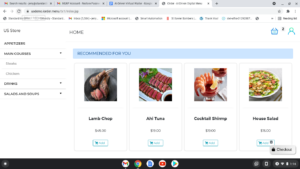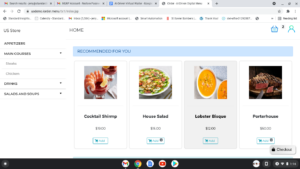By: Jerry Abiog, Co-founder and Chief Marketing Officer at Standard Insights
It’s hard to believe that restaurants fortunate enough to survive the pandemic are now facing crippling threats to their business’ existence – labor shortages and inflation. As things have opened, patrons are swarming restaurants. Restaurateurs cannot keep up with the surge in demand, while their customers are hit with higher menu prices, sometimes by 10 percent.
Labor Shortages
When shutdowns started in March 2020, restaurants laid off workers; the problem facing restaurateurs is the unemployed from yesteryear are not resurfacing to take vacant jobs today. Many factors drive this: expanded unemployment benefits, desire to leave the restaurant industry, lack of available daycare, fear of COVID, or social unrest. Big picture stats shows that the labor shortage won’t end soon as US birth rates have declined by four percent since 2019, and up to 40 percent of Boomers are leaving the workforce.
Arguably the most significant problem driving the labor shortage is wages, forcing some restaurateurs to pay their workers more. The result, exorbitant menu prices. For these restaurants to remain competitive, AI-driven technologies that leverage one’s data can address dire situations that some are facing.
Contactless Dining and the Rise of the QR Code
COVID accelerated the rate of technological adoption for restaurants. Last year, it was the QR code that made a resurgence as contactless dining became the norm. Once thought to be a gimmick, the QR codes are here to stay. According to a study by Drum/YouGov, 45 percent of US consumers have used it in the last three months.
The three types of dine-in QR codes:
- Static – customer scans code; a PDF menu appears, the customer gives the order to waitstaff
- Virtual Waiter – customer scans code and can complete their order on their phone without the need for waitstaff interaction
- AI-Driven Virtual Waiter – same protocols as above; however, the customer is given “Amazon-like” recommendations based on their favorite menu items based on past order history or input from the restaurateur if a first-time customer
The first version does nothing to address labor issues. The second can address waitstaff shortages; however, its functionality is limited in scope. The third addresses the need for waitstaff labor and then functions as a true “AI-Driven Virtual Waiter.” It presents your customers with their preferences and upsells and cross-sells them appetizers, drinks, or desserts to help improve average order value.


Notice that customer 1 isn’t a fan of beef and isn’t presented with the Porterhouse, while both are fans of both Cocktail Shrimp and the House Salad. A savvy restauranteur who leverages their customer data using AI can target them with the correct menu item at the right time to drive sales.
Wage and Price Inflation Rears its Ugly Head
Servers are now demanding guaranteed pay, far above $15-$20 per hour. A can of coconut milk used in Thai dishes costs $2.49. In the recent past, it was $.89. In these scenarios, it’s a foregone conclusion that prices will increase. However, by how much?
You may go to a restaurant that requires a wait staff of 10 to keep things going on a Saturday night. Now, upon your first visit since early 2020, you’ll find no waitstaff or QR codes. The bartender informs you that they don’t have any servers and hands you a paper menu. Upon further conversation about the current business climate, she tells you that she cannot find servers due to their outrageous salary demands. If not addressed, she could close her doors.
The Future of how Waiting Tables Will be Done
Given the bartender’s situation in the last example, she could employ a 3-person waitstaff with a pay rate of $20 per hour in conjunction with the AI-Driven Virtual Waiter. As AI has become democratized, these types of solutions are affordable for most small businesses.
As long as data is structured correctly and customers use the application, the AI algorithm won’t miss a beat. It will remember who ordered what and when far surpassing the memory capabilities of your best servers. Implementing an AI-driven virtual waiter can:
- Address waitstaff shortages
- Mitigate substantial price increases
- Improve average order value
All this while continuing to serve the onslaught of customers efficiently as if they were operating with a fully functioning wait staff.
In the past, the thoughts of implementing AI struck fears of taking away one’s job. Now, as the current business climate indicates, it’s not a matter of a “nice to have” but a necessity if these restaurants want to remain competitive with a labor shortage that isn’t likely to end for the foreseeable future.
About Jerry Abiog
Jerry Abiog is a Co-Founder & CMO of Standard Insights an AI as a Service growth marketing platform. They developed iOrder, an AI-driven digital menu, and signed a partnership with OpenMenu to provide restaurants operators a way to keep their data to grow sales and address the labor shortage.



